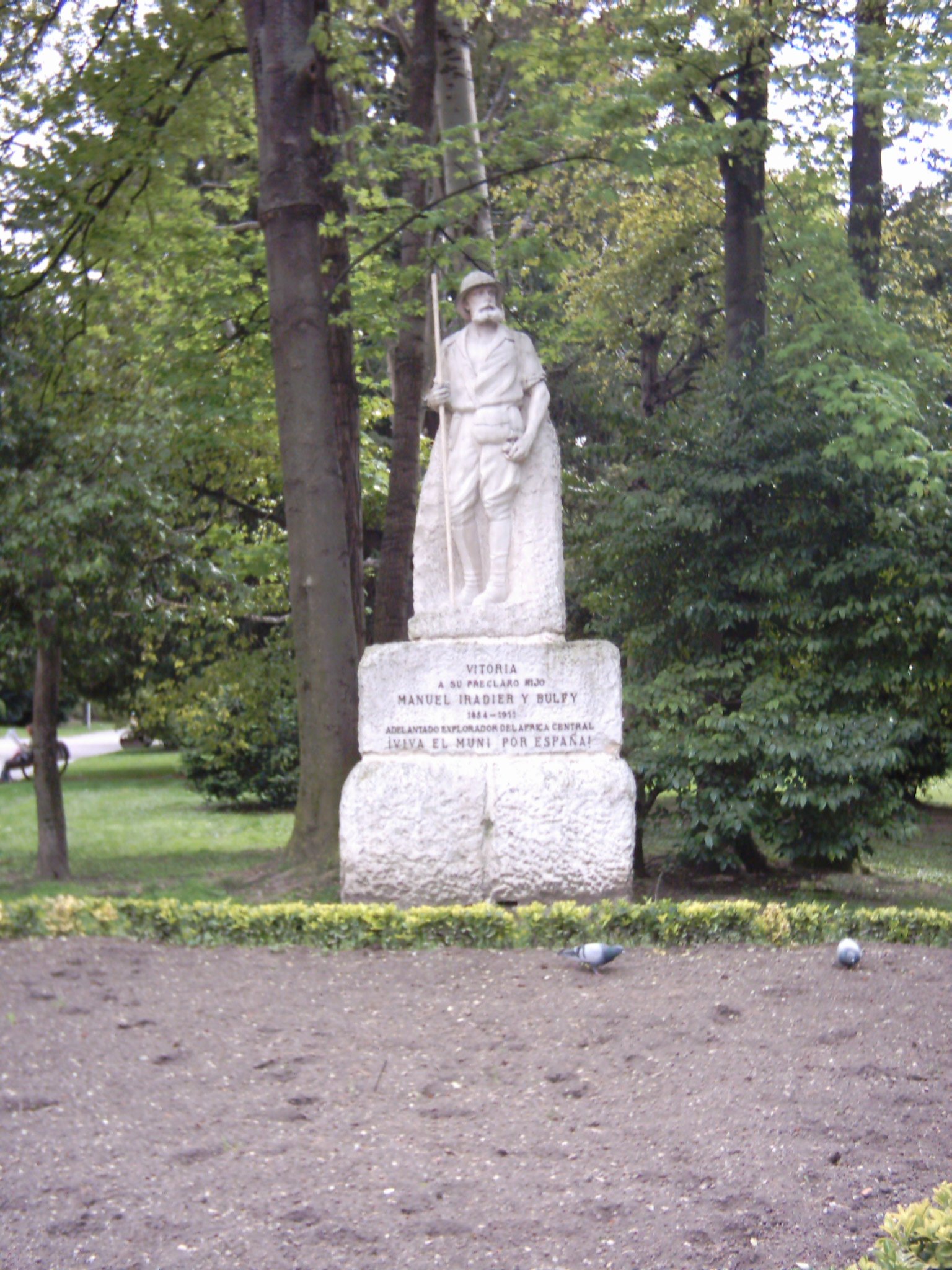Manuel Iradier on:
[Wikipedia]
[Google]
[Amazon]
 Manuel Iradier (b. Vitoria, 1854–1911) was a Spanish explorer of Africa. A student of philosophy and literature, he fell under the influence of
Manuel Iradier (b. Vitoria, 1854–1911) was a Spanish explorer of Africa. A student of philosophy and literature, he fell under the influence of
 Manuel Iradier (b. Vitoria, 1854–1911) was a Spanish explorer of Africa. A student of philosophy and literature, he fell under the influence of
Manuel Iradier (b. Vitoria, 1854–1911) was a Spanish explorer of Africa. A student of philosophy and literature, he fell under the influence of Henry Morton Stanley
Sir Henry Morton Stanley (born John Rowlands; 28 January 1841 – 10 May 1904) was a Welsh-American explorer, journalist, soldier, colonial administrator, author and politician who was famous for his exploration of Central Africa and his sear ...
and turned to exploration.
History
From 1868-1874 he made preparations for an expedition toAfrica
Africa is the world's second-largest and second-most populous continent, after Asia in both cases. At about 30.3 million km2 (11.7 million square miles) including adjacent islands, it covers 6% of Earth's total surface area ...
. He founded a company to aid collaboration with others who had the same interests.
First Expedition
In 1874 he made his initial preparatory trip to theGulf of Guinea
The Gulf of Guinea is the northeasternmost part of the tropical Atlantic Ocean from Cape Lopez in Gabon, north and west to Cape Palmas in Liberia. The intersection of the Equator and Prime Meridian (zero degrees latitude and longitude) is i ...
, from where he planned to proceed towards the interior. During the expedition, Iradier - accompanied by his wife, sister-in-law and others, traveled almost from Aye up to the Muni River
The Muni is an estuary of several rivers of Equatorial Guinea and Gabon.''A directory of African wetlands'' By R. H. Hughes, J. S. Hughes, p. 501 (on Google Books Part of its length form part of the border with Gabon. It is from this estuary tha ...
. In the course of the journey his wife gave birth to daughter Isabel.
He followed the Utamboni river in an attempt to reach the Great Lakes and the mouth of the Muni.
The expedition reached the islands of Corisco
Corisco, Mandj, or Mandyi, is a small island of Equatorial Guinea, located southwest of the Río Muni estuary that defines the border with Gabon. Corisco, whose name derives from the Portuguese word for lightning, has an area of , and its highe ...
and Elobey Grande
Elobey Grande, or Great Elobey, is an island of Equatorial Guinea, lying at the mouth of the Mitémélé River. It is sparsely inhabited. Elobey Chico
Elobey Chico, or Little Elobey, is a small island off the coast of Equatorial Guinea, lyi ...
, as well as Inguinna and San Juan, the Utongo and Bathe rivers, as well as the Paluviole and the Saw of Crystal mountain ranges. The expedition had to turn back when the majority of the indigenous escort absconded.
Isabel died in the course of the expedition.
Iradier mapped the regions he had visited and, on his return to Spain, these were published by the Company of Africanists and Colonistas of Madrid
Madrid ( , ) is the capital and most populous city of Spain. The city has almost 3.4 million inhabitants and a metropolitan area population of approximately 6.7 million. It is the second-largest city in the European Union (EU), and ...
.
Second Expedition
His second expedition began at the end of 1877 during which he recorded vocabularies and grammars of the languages of the tribes he encountered, as well as numerous astronomic, ethnographic, climatological and commercial observations.Third Expedition
The company funded a third expedition that departed in July 1884. Iradier was accompanied by Dr. Ossorio, who participated as the delegate of the Africanists' Company. The trip crossed the territories he had already explored and reached the navigable limit of the river Utongo, from there following the Cóngue river up to the river Muni, down which they descended to coasts of the Buru, on the North-East of Corisco's Bay. Suffering from a high-fever and unable to continue, Iradier returned to Spain, arriving on 28 November 1884. In February 1885 he submitted to the Company of Africanists and Colonists of Madrid various documents, contracts of annexation and notarial deeds, incorporating the territories of the river Muni under Spanish sovereignty. Purportedly such sovereignty had been acknowledged by 101 indigenous leaders, covering an area of 14.000 square kilometres. These territories, known later asSpanish Guinea
Spanish Guinea (Spanish: ''Guinea Española'') was a set of insular and continental territories controlled by Spain from 1778 in the Gulf of Guinea and on the Bight of Bonny, in Central Africa. It gained independence in 1968 as Equatorial ...
, remained under Spanish sovereignty until 1968.
Published works
Iradier published numerous works in which he documented his African experiences.See also
* Isabel de Urquiola, his wife {{DEFAULTSORT:Iradier, Manuel 1854 births 1911 deaths People from Vitoria-Gasteiz Spanish explorers Spanish Africanists